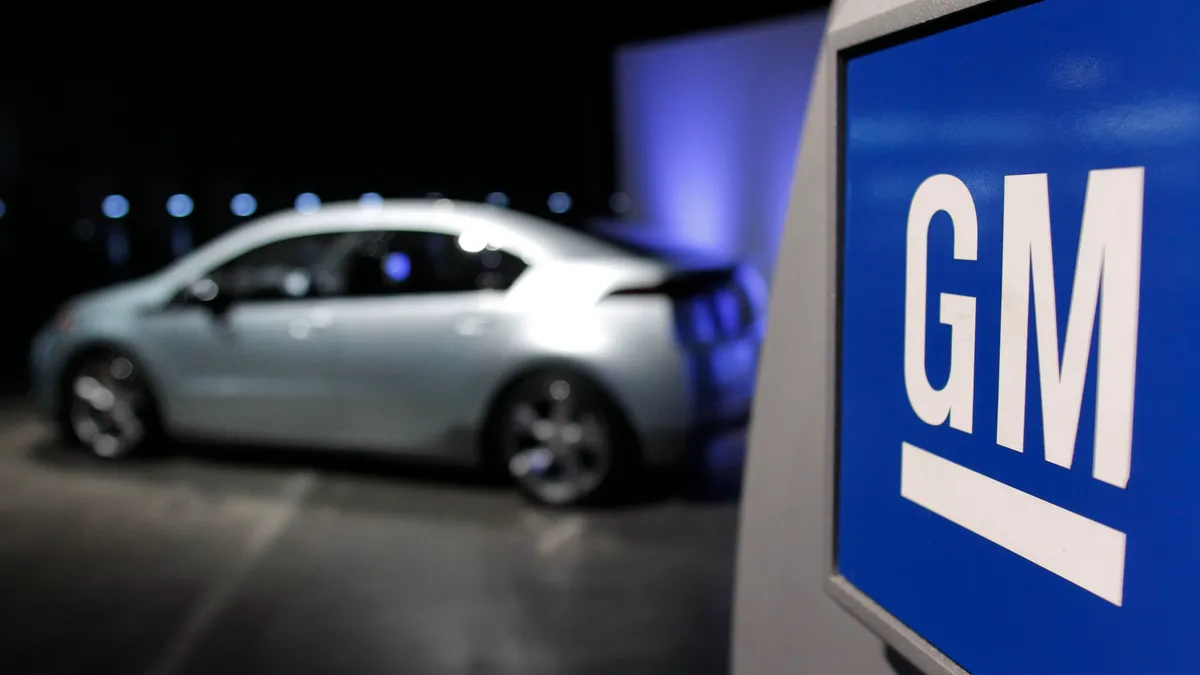Dive Brief:
- Supply chain struggles led to a steep 40% drop in General Motors’ second quarter net income from the year-earlier period, the automaker reported Tuesday.
- Over 90,000 vehicles were left sitting unfinished by the close of the quarter for want of key materials, with “late-breaking” semi-conductor chip shortages contributing negatively to quarterly results, CFO Paul Jacobson said during the automaker’s earnings call.
- “The supply chain challenges causing the company vehicle inventory buildup primarily occurred in June and have continued in July, affecting some of our plans,” Jacobson said. “While this is frustrating, we have built some of this uncertainty into our full year guidance.”
Dive Insight:
GM reported $35.7 billion in revenue for the quarter, a 5% increase, with net income of $1.7 billion compared to the $2.8 billion reported a year prior. The company did not adjust its full-year forecast, expecting net income of $9.6 billion to $11.2 billion by year’s end.
Similar to others in the automotive space, the company is also taking steps to brace for a moderate economic downturn, including reducing discretionary spending, according to CEO Mary Barra during the earnings call.
“We have modeled several downturn scenarios, and we are prepared to take more deliberate action when and if necessary,” she said. “Regardless of the circumstances, we continue to move forward from a position of strength.”
Demand and vehicle pricing are also expected to stay strong despite lingering supply chain challenges which could hamper available inventory, according to Jacobson.
“I would say that at the end of the day, all the data that we’ve seen to date on vehicle pricing and demand remains strong…we still think that there is a big pocket of demand that hasn’t been met yet,” he said.
Such confidence is juxtaposed against other key consumer spending forecasts, with retailer Walmart cutting its profit forecast amongst warnings consumers were clamping down on their own discretionary spending. The Consumer Price Index (CPI) increased by 9.1% in June. A survey conducted by the National Association for Business Economics (NABE), meanwhile, found 43% of respondents place the likelihood of a recession in the next 12 months at 50%.
GM remains confident in its ability to ramp up production for the second half of the year, however, with data continuing to “give rise to strong demand for our product,” according to Jacobson. The company is also continuing to push forward with its plans for electric vehicles (EV), announcing a target of 1 million units in annual EV capacity in North America by 2025 referred to in their earnings deck.
The U.S. recently passed what is often considered a key tipping point for emerging technologies with EVs, which comprised 5% of new car sales earlier this year according to a July 9 report by Bloomberg. Reaching that percentage could indicate EVs are on the precipice of mass adoption by U.S. consumers — a quarter of new car sales could be EVs by 2025, according to Bloomberg.
While this could represent a critical opportunity for GM, the car manufacturer has severely lagged behind shinier new competitors in the auto industry such as Tesla when it comes to capturing the EV market. Tesla — which is among those automakers looking to cut staff in an attempt to brace for upcoming economic challenges — still has about 66% of the U.S. EV market cornered, while GM accounts for about 6%, according to a Sunday report by CNBC.
GM locked in critical supplies for the materials necessary to hit its EV goals, securing key “binding agreements” for enough battery-related raw materials to build its targeted 1 million EVs in North America by 2025, according to Barra.












